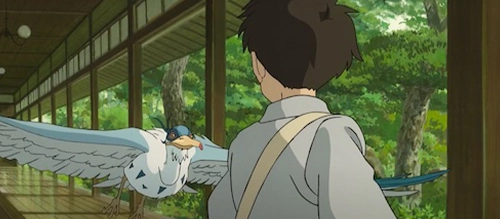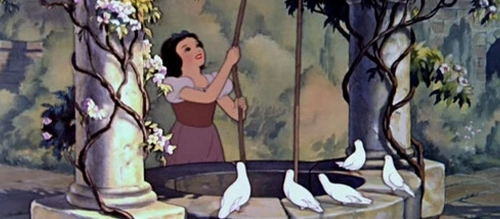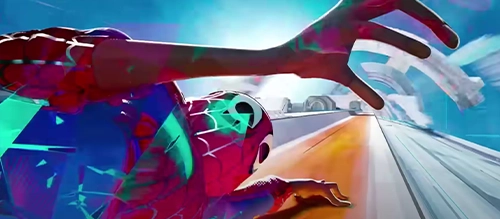The Academy Has Failed Animation (Again)
The nominations for the 96th Academy Awards were officially announced on 23rd January 2024 and, as expected, were the source of great controversy. Most of that controversy was directed toward the snubs that the biggest film of the year, Barbie, suffered in the Best Actress and Best Director categories. Although Margot Robbie got nominated as a producer in the Best Picture category and Greta Gerwig got a nomination for Adapted Screenplay, there was a huge outcry on social media and beyond, with people accusing The Academy of being misogynistic. Buried underneath this social media firestorm, was another (arguably bigger) snub that pertains to an entire medium in which thousands of people work: animation.

Animation is, yet again, getting the short end of the stick. You just need to read the annual “Brutally Honest Ballot” articles by The Hollywood Reporter to see how many members of the Academy feel about the medium. In most cases, they don’t bother watching them or let their kids pick their favorites. However, this year, it seemed that something might change. Not one but two animated films were released to big fanfare, made a lot of money, and received rapturous reviews: Sony Pictures Animation’s Spider-Man: Across the Spider-Verse and Studio Ghibli’s The Boy and the Heron.
The former, directed by Joaquim Dos Santos, Justin K. Thompson, and Kemp Powers, and the latter by legendary filmmaker Hayao Miyazaki, told bold stories with a high level of artistry that pushed the animated medium to new heights. In the case of Across the Spider-Verse, it held the not-so-enviable position of attempting to be a satisfying follow-up to its already groundbreaking, Academy Award-winning predecessor, and not only managed to do that, but also to surpass it, illustrating exactly how any genre-defining film’s sequel should be made. The Boy and the Heron represented a spectacular comeback for Hayao Miyazaki after a ten-year absence (and supposed retirement) that saw the venerable filmmaker at the top of his craft. He gave us a melancholic and gorgeous fantasy about the complexities of life and how we choose to live it, all set against the backdrop of life in Japan during World War II. Needless to say, if these films had been live-action, they would likely have been big contenders for the top prize. Alas, since they are “only animated”, they were relegated to the Animated Feature category, a blessing and a curse suffered by animated fare since the category was first established in 2002.

You can trace back to the exact moment when the Academy inarguably failed animation for the first time: Snow White and the Seven Dwarfs in 1937. Before Walt Disney and his team stunned audiences around the world with their first fully-fledged animated feature, the Academy had already given awards to animated films (at the time it was called the Best Short Subject, Cartoon category) and the Disney Company was a regular winner. However, Snow White represented a huge leap in what animation could do. Not only did it demonstrate the power of the medium as family entertainment – as audiences laughed, cried, and cheered with the film – but it also became the highest-grossing film of 1938. It was arguably the biggest advance in film innovation since the advent of sound. And yet, The Academy didn’t think it wise to recognize it with the top prize or even a nomination, instead handing it a “special” achievement award that told everyone that the film was good but not good enough to be nominated for Best Picture.
This bias has permeated the Academy ever since, with just a few sparks of hope here and there. In 1992, Beauty and the Beast broke the glass ceiling and became the first animated film to be nominated for Best Picture. This seemed like a signal that a change was coming, and yet it wasn’t until 2010 (18 years later) that another animated film got nominated for Best Picture; a feat that was repeated the following year but has not happened again since.
The nominations for Up and Toy Story 3 only happened after The Academy decided to expand the Best Picture category from five to (a maximum of) ten nominees. The Academy made this change following the outcry that ensued when they failed to nominate The Dark Knight and Wall-E for Best Picture in 2009. The Academy’s message was that 10 nominees would allow for a more varied roster of films to get a nomination. No animated film has been nominated since.

In the 13 years that have passed between then and now, many animated films that were as good as or better than Best Picture nominees have come and gone. In 2019, for example, the 91st Academy Awards presented their top statue to what is arguably one of the worst nominees ever, Green Book. Not only that, but Bohemian Rhapsody, another lacklustre film, was vying for the same award. That same year, Spider-Man Into the Spider-Verse made a splash with its groundbreaking character design, disruptive animation style, and superb storytelling to only get one nomination in the usual category. Moreover, in 2022, Flee, a heart-wrenching, beautiful, animated documentary got three nominations for Best Animated Feature, Best Documentary Feature, and Best International Film, and yet it failed to get one for Best Picture. Since Parasite swept the Oscars in 2020, international films have been gaining momentum (two, Anatomy of a Fall and The Zone of Interest, are nominated in 2024), which seems like progress, but the Academy’s efforts to be inclusive and varied stop the moment an animated film enters the fray. At the 96th Academy Awards, Spider-Man: Across the Spider-Verse and The Boy and the Heron will not only miss out on a Best Picture nomination that would solidify their importance to a watching global audience, but their other achievements in score, production design, visual effects and sound will not be recognised either. There’s still a long way to go.
For better or worse, the Oscars do give cinema a small period in the spotlight, and they do give films and the people who work on them a sense of legitimacy, artistically. By snubbing animation time and time again, the Academy’s message has seemed loud and clear for almost a century now: they don’t see it as a legitimate medium worthy of recognition. That attitude affects the people that work tirelessly to bring these films to life – artists and craftspeople and storytellers and dreamers, who usually have to deal with poor working conditions, job insecurity, and abusive executives who see them as northing more than cogs in a machine.
An Academy recognition won’t fix all of animation’s problems, but it could be a first step to recognising a medium that gifts us beauty and imagination in spades year on year, that brings their companies billions of dollars, and offers us memories that last a lifetime. Every year, The Academy of Motion Picture Arts and Sciences has a chance to fix that. Let’s hope they don’t fail again next year.
Written by Munir Abedrabbo C.
You can support Munir Abedrabbo C. on X (Twitter) @maac027 and Instagram @maac027.

